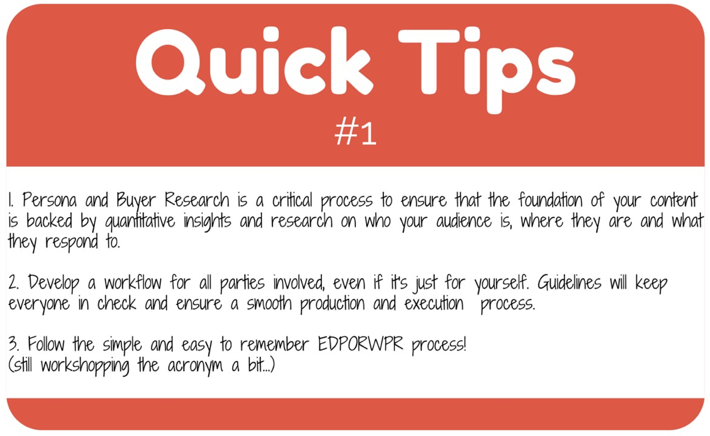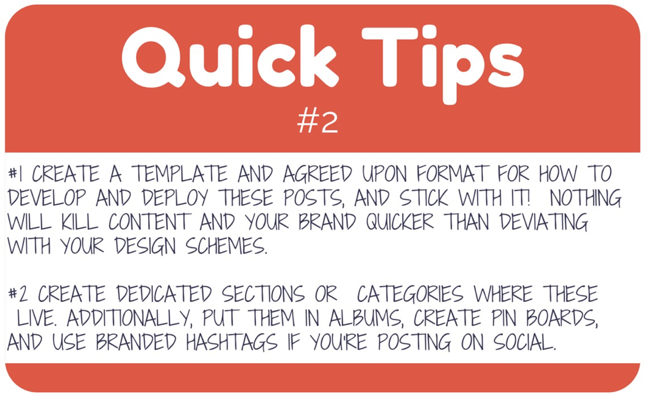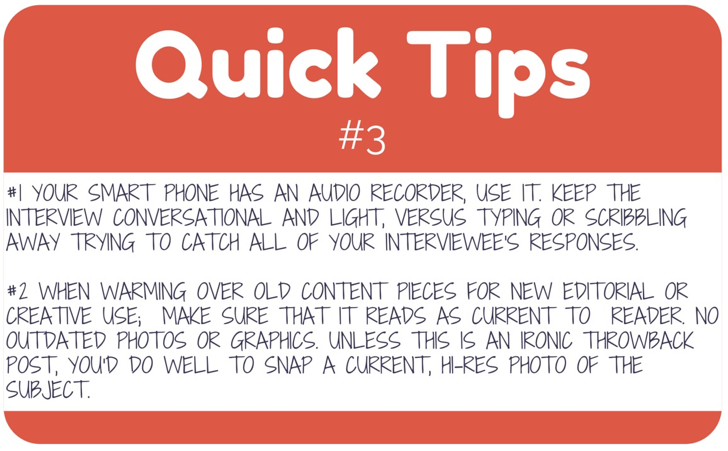As a marketer, you’ve been hit over the head with the value and importance of a well-rounded content strategy for a few years. It’s the topic of conversation because it’s one of the most critical pieces of a sound inbound marketing strategy. In Digital Marketing, it’s an arms race to get eyeballs and no matter what your weapon of choice you’re going to need ammo, and there’s no cheat code for unlimited ammunition (if there IS a cheat code, drop me a line). Suffice it to say, having to reload your content comes with the territory. The proverbial “magic bullet” here is: Get All of the Bullets Possible and Work On Your Aim. I’m out of idioms and tropes, so onward we go.

Starting a blog, easy enough. Maintaining it over the long-haul and keeping it chock full of fresh content…not so much. If you’re utilizing content and blogging as part of your regular marketing mix, then you know the rallying cry by now: Content, content, blog blog blog…more more MOAR!
Barrier #1: How Do I Get Started? / I Have No Idea What I’m Doing)
That’s ok – you’re not alone. The first step is acceptance. The second step is to start planning your content strategy and setting achievable performance metrics. If you can answer these questions, then you’ll be on your way to crafting a content plan that’s actionable in no time.

- Who is your target audience?
- Do you have a core audience that you want to reach or a new audience demo that you want to increase penetration with?
- What are your brand/organization’s mission statements and value propositions?
- Assuming you have this, is this the “corporate speak” version, or is it how customers view you? It’s critical to distinguish between the two if they are not aligned.
- What are your business objectives?
- Prospecting, Lead-Gen, Awareness, Thought Leadership, Customer Advocacy and Community Building.
- What are your core and secondary messages to deliver to customers?
- Identify and list in order of importance what messages you wish to communicate to your audience.
- What types of content are you looking to produce and what channels where they be promoted through?
- Blogs, Whitepapers, SlideShare, Emails, Social Posts, Lead-Gen-Cards, Videos, Testimonials, Pins, Tweets, Snaps, other things that haven’t been invented yet.
- List out and prioritize the short-term and long-term channels, and that will function as your content distribution plan.
- What’s going on with the competition?
- What are they doing well in the blogging and content space?
- Identify where “the gap.” What are they missing or what could be doing better?
To hone in on a content workflow process, here’s a simple step-by-step.
Blog Post + Content Development Workflow Steps Evaluate current content, research new, additional supporting content to find the right topic. Draft the blog post. Proof and edit the copy of the blog or content piece. Optimize the blog post, (readability, SEO value, supporting visuals, citing sources). Review back content for related posts that can include links to the NEW post. Write copy for social media posts that are “voiced” to be channel specific (e.g. hashtags or @ mentions) Publish/Schedule the blog post – schedule through an automated marketing platform – like emfluence‘s! Review channel analytics, monitor over time and consider testing different variations when publishing. (still work shopping the EDPORWPR acronym…

Barrier #2: I’m Blogging…Now I’m Out of Topics to Write About
You made the blog and content producing leap. So, the hardest part is over; but now you have to start diving deeper and thinking more tactically to stay fresh. EVERY content producer and marketer will face this harsh reality at some point, so welcome to the club. Here’s the good news: There’s a wealth of expert knowledge and free resources all around you, watching you, and waiting to be tapped as that next killer blog post, video, or infographic.
Tap into Your Inbox
Your Inbox and more specifically, your OUTBOX. It’s an unmined treasure trove of everything pertaining to your business and industry, servicing your clients and customers. If you work in Marketing/Advertising, there’s also a sizeable number of cat memes and topical gifs sprinkled in as well. What? They’re funny, don’t judge…
A quick scan of your average weekly email correspondence might net some surprising opportunities that are ripe for content pieces.
HR + PR Internal Emails
Internal Memos on staff updates, new hires, company events and community service/involvement. Say goodbye to internal emails that you may normally gloss over. Say hello to branded content that showcases your company culture, and spotlights new hires and tenured staff! This is the low-hanging, delicious blog fruit that’s innately shareable and consumable on social. It’s simple to script, and you already have the who, the what, and the why of your content ready to go.
Internal Memos on Product & Service Innovations
Does your company have changes to existing or new products and services? Have you launched something new or improved upon something old?Sweetness. As long as it’s not proprietary, get out there and blog about how awesome it is, and why existing customers/clients should be excited and why prospects should get in business with your business. (Seriously, if there’s something that your company just launched do it now – this post will still be here later, pinky-promise.)
Client & Customer Service Emails
If your role requires that you interface with customers or clients, then the chances are that you’re regularly answering questions, putting out fires or having to identify/create a solution. You may also find that you see the same types of questions/problems surface regularly.
Customer questions, combined with your answers equals content that educates and provides value to the customer
This could take the form of a resource list, an infographic, a demo/tutorial video with an internal expert, a case study, tips, and tricks list, or a satisfied customer can be featured in a testimonial. Look at you! You just turned that email that you didn’t want to deal with into a valuable piece of information that may save you from answering it again down the line. Content saves the day again! Right?!

Tap into Other Departments and Co-Workers
Disclaimer Don’t tap into THEIR email inboxes, as there’s probably HR guidelines against that – but actually, TALK TO THEM instead. If you have limited resources or budget, there’s nothing easier (or cost-effective) than tapping into the internal resources that you already have available. Similarly, to how you leveraged the goodies in your email for the subject matter, tapping into other departments can benefit in the same way. Not only do you, the content producer, gain insight into other areas of your business that you can repurpose for content, but you also help to establish thought leadership within your organization.
Set-up a short meeting to interview the subject, come prepared with questions that they, as the expert, can weigh in on, and take good notes. Remember, they’re doing you a favor to take time out of their day. You don’t want to have a second go around because you were unclear the first time.
When you’re tapping intradepartmental resources for content, that blog topic can and should be attributed to that source and not be authored by “staff” or “your brand”. Putting a name, face, and job role to these types of posts helps to grow your credibility
Repost and Update Older Posts
Yep. Repost old content. Seriously, do it. Identify successful posts from the past and breathe some fresh life and update the content to bring it current. What worked for you once has a strong likelihood to work again.

Barrier #3: I’m blogging…But My Content Isn’t Working
Don’t get discouraged, the web is an endless sea of content, and there will always be somebody else with more resources, pushing out more content, and getting more visibility (FYI: It’s probably Guy Kawasaki). The good news is that as you test, measure, learn and optimize over time – you can and will achieve better results. Stay the course, young blogger. Stay the course.
In 2015, both Moz and HubSpot have published reports on their publishing volume experiments and the results of “quality versus quantity” which you can read about here (MOZ)and here (HubSpot). These studies can help provide you with direction on how to craft your publishing strategy and more importantly, what patterns to look for in your data.
Content Distribution: Make it Visible and Shareable
Now it’s time to post your shiny new content to social media channels, internal/external email newsletters and optimize the post for each of these channels – i.e. Don’t use the same copy when posting to Facebook, Twitter, LinkedIn, etc.
Here’re some tips to get the most out of your content:

- Encourage fellow employees to share actively and promote branded content on their personal social channels to maximize the organic reach and viral spread of your posts.
- Add compelling visuals and headlines to your posts to increase visibility in news feeds. The average time that you have to catch a user’s attention on Twitter and Facebook is under 4 seconds (the flick of a thumb on a touchscreen).
- When putting paid promotion behind social posts to boost, capture leads, get clicks to your site, grow awareness – the most important piece is that you evaluate each channel’s targeting capabilities and ad types and that you accurately target the desired audiences.
- Monitor your performance analytics on EVERY channel, test, analyze, optimize and post again. To have true, actionable data and learnings on what channel audiences respond to your content, you must regularly monitor the following.
- Social Channel Audience Breakdown and response rates. Who responded to the content and where (what channel)?
- Day-Parting Analysis: What days and times of day do you post? Which are most successful?
- Audience Engagement: Is the audience engaging with your content as you intended?
- Maybe viewers are clicking on the links to view your content, but not sharing and growing your reach. Does that mean it’s bad content? Not necessarily. It may simply be that you need to include stronger calls-to-action to tell the viewer to take the desired action. “There are endless tools (free and paid) at your disposal that can aid in your discovery of what’s trending, what your audience is interested in and actively consuming. When leveraged correctly, they will allow you to make educated, data-driven decisions on how to post, what to post, and when to post.
BuzzSumo is a simple and industry-leading tool that allows you to receive email digests or “content alerts” of your assigned topics and your brand /competitor activity over your choice of set date ranges. Let the content and inspiration come to you.
SEMrush and KeywordSpy allow you to access analytics and insights of competitor strategies across display ads, organic and paid search, and link building. – This is a valuable tool for looking at what they are spending, what they are spending it on, and what your competitive space looks like. Moz is another popular industry resource for drilling down and providing data-insights for your online presence and effectiveness.
Canva is a free tool that even novice designers can use to create stunning visuals for the web. Social posts, blog graphics, infographics, etc. Canva’s an ultra simple and free solution if you don’t have a designer on standby. (all of the graphics in this post were created on Canva).
Conclusion: Staying committed to producing content is the first step to growing your online presence and a core foundation for Inbound Marketing and attracting potential leads and customers. It’s paramount that you start the content creation process with a well-researched plan of action, detailed workflow (remember the EDPORWPR!), implement reasonable performance goals and KPI’s, and understand the barriers that you will inevitably come up against – but have an action plan in place to overcome them.
Creating, analyzing and monitoring content is just the beginning – check out some of our previous posts to learn more about how to deploy your content through a strategic, results-driven Omni-channel approach.
Using Email to Drive Social Interactions
Using Rev Recorder to Speed Up Content Creation
5 Examples of Killer Content Marketing
The Rise and Importance of Social Video
Want to learn more about inbound Marketing and content planning for your business? Give us a shout, so we can help you take your content to the next level.
[more]
- Maybe viewers are clicking on the links to view your content, but not sharing and growing your reach. Does that mean it’s bad content? Not necessarily. It may simply be that you need to include stronger calls-to-action to tell the viewer to take the desired action. “There are endless tools (free and paid) at your disposal that can aid in your discovery of what’s trending, what your audience is interested in and actively consuming. When leveraged correctly, they will allow you to make educated, data-driven decisions on how to post, what to post, and when to post.
- Identify where “the gap.” What are they missing or what could be doing better?
- What are they doing well in the blogging and content space?



